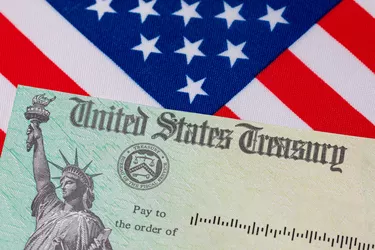
The United States Treasury issues short-term securities known as Treasury bills, or T-bills, by conducting weekly auctions. It sells T-bills at a discounted rate and redeems them at their face value. The difference between a T-bill's purchase price, established by auction bidding, and its face value at maturity determines the purchaser's gain. Investors buy T-bills by submitting competitive or noncompetitive bids to the Treasury. The two types of bids have several significant differences.
Bidder Profiles
Video of the Day
Banks, brokerage firms, private investment funds and other types of large investors usually submit competitive bids for T-bills. Successful competitive bidding requires comprehensive knowledge of securities markets. Small investment firms and individuals tend to submit noncompetitive bids, also known as tenders.
Video of the Day
Bid Timing
Noncompetitive bidders must submit their offers by 12:00 p.m. Eastern Time on the day of the auction. The Treasury accepts competitive bids until 1:00 p.m. Eastern Time on the day of the auction. Major competitive T-bill bidders often submit their bids seconds before the auction closes.
Successful competitive bidding requires comprehensive knowledge of securities markets.
Bid Characteristics
In a competitive T-bill bid, the bidder specifies the amount of T-bills it wants to purchase and the return it wants on the investment. The bidder expresses the return in terms of discount rate. For example, a bid of 1.00 means that the purchaser seeks a discount rate of one percent.
If the Treasury accepts this bid for a T-bill that redeems for $1,000 at maturity, the purchaser pays $990. A bid of 1.5 is a higher bid because the purchaser seeks a higher discount by offering to pay $985 for a $1,000 T-bill. In an auction, the Treasury might not accept the highest bids made by competitive bidders. In contrast, it accepts the tenders of all noncompetitive bidders in the auction.
Distribution
When the auction closes, Treasury officials subtract all noncompetitive bids from the total amount of the public offering. For example, if the noncompetitive bids in a $10 billion auction total $2 billion, the Treasury reserves $2 billion for the noncompetitive bidders and distributes the remaining $8 billion of T-bills to competitive bidders.
Treasury officials rank all competitive bids from lowest to highest; they begin distributing T-bills, starting with the lowest bidder. They continue issuing T-bills until the $8 billion pool for competitive bidders is depleted. If the total amount bid by competitive bidders exceeds the pool amount, the Treasury does not accept the highest competitive bids.
Treasury officials then calculate the discount rate for noncompetitive bidders by averaging the competitive bids. For example, if the successful competitive bids ranged between 1.0 and 1.5, the discount rate for noncompetitive bidders will be set within this range.
Limitations
An individual competitive bidder can purchase no more than 35 percent of the total amount offered in a T-bill auction. A noncompetitive bidder is limited to a purchase of $1 million per auction.
- TreasuryDirect: Treasury Bills In Depth
- Federal Reserve Bank of New York: Treasury Auctions
- Money, Banking, and Financial Markets; Laurence M. Ball
- U.S. Department of the Treasury: Resource Center -- Daily Treasury Bill Rates Data
- U.S. Department of the Treasury: Resource Center -- Daily Treasury Yield Curve Rates